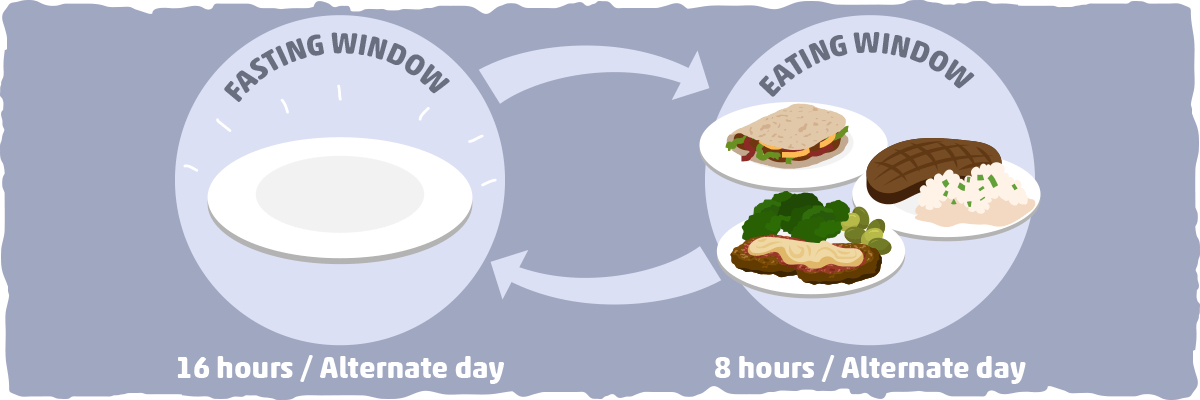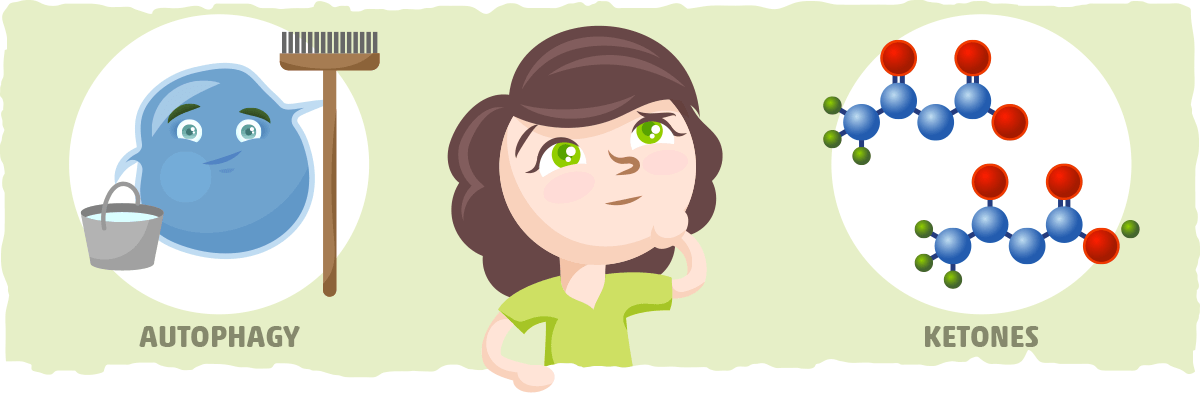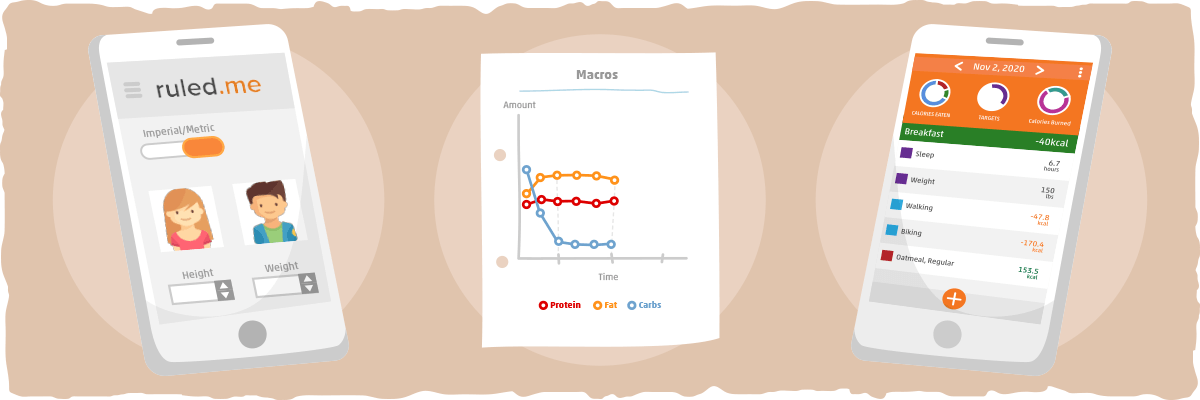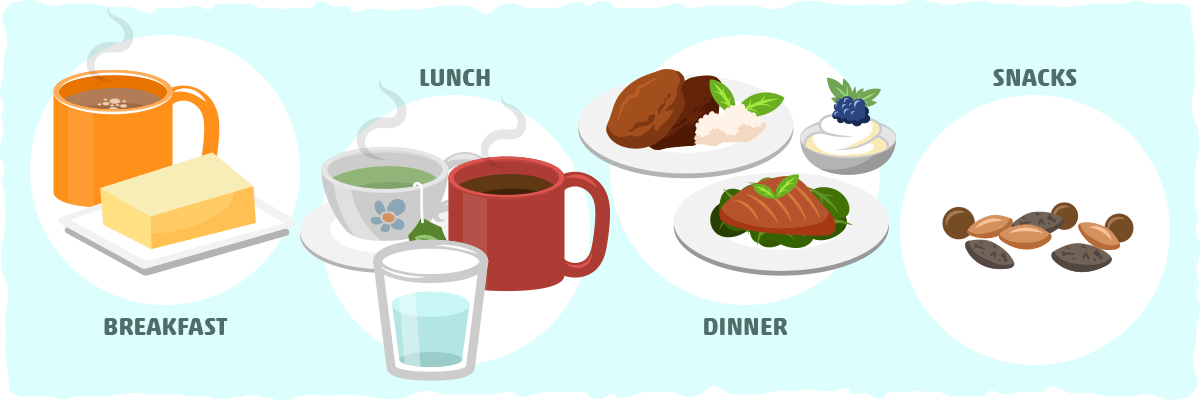
Intermittent fasting has become an immensely popular dieting strategy. Although it may seem like another diet fad, there are several reasons why skipping meals can be so helpful for many of us.
The first (and biggest for most) is that intermittent fasting can help you bust through weight loss plateaus. Down to those last couple of pounds, or been stuck at the same number for weeks? Give this a try.
The other reasons are for the sheer health benefits of fasting. Better metabolic adaptions, improved muscle growth and synthesis, and improved responses to post workout meals when you work out. Even longer life spans have been shown in worms – yeah, I know it’s only worms, but still!
It’s also shown to boost mental clarity and give more focus during the day.
And this is just a brief overview of what the research on fasting has found. For an in-depth look at the benefits of intermittent fasting, you can head over to the more scientific post I did on it over here.
On the other hand, If you are looking for a meal plan, shopping list, and other practical strategies that’ll help you experience the benefits of the keto diet and fasting at the same time, continue reading below.

Intermittent fasting is an eating pattern where you cycle between periods of consuming calories and avoiding calories (i.e., feeding and fasting). There are several different intermittent fasting methods, all of which split the day or week into eating windows and fasting windows.
Most people incorporate intermittent fasting by simply extending their overnight fast (i.e., the period of time between dinner and their first meal the next day). The most popular form of intermittent fasting is known as the 16/8 method, whereas the person will fast for 16 hours of the day and consume all of their calories during the remaining 8 hours.
Other common intermittent fasting strategies include skipping both breakfast and lunch (for a 21-hour fast) or alternate day fasting (24-hour fasting and feeding windows).
Despite what you may think, intermittent fasting is relatively easy to incorporate into your lifestyle. Many people report feeling better and having more energy during a fast. Hunger is usually not that big of an issue, although it can be a problem in the beginning while your body is adapting to your new feeding times.
In general, intermittent fasting is a safe and effective dieting strategy that can help us reach our body composition goals. Many keto dieters (including myself) incorporate 16-21 hour fasts into our schedule almost every day as a way to help us achieve and sustain our goals.
With that being said, you don’t need to skip breakfast to maximize your keto diet results. Intermittent fasting is not essential, it just another tool in the health optimization toolbox that will be a staple for some and useless for others.

Intermittent fasting has become wildly popular over the past few years. Well-known doctors and researchers swear by it.
However, intermittent fasting isn’t the magic bullet for health and weight loss that many make it out to be. Most of the benefits that we get from restricting our eating window can be explained by being in a calorie deficit.
While intermittent fasting, it is much easier for us to maintain a calorie deficit, which results in weight loss and improved metabolic function. This is arguably the main reason why skipping meals can be so effective for enhancing many aspects of our health.
With that being said, intermittent fasting can provide us with benefits that extend beyond a calorie deficit because fasting stimulates autophagy and ketone production. We take a closer look at how these two processes enhance our health in this article.
So, what does all of this mean for you? It depends on your lifestyle preferences and the results you are already getting for your diet.
Some keto dieters, for example, are already experiencing amazing results, so I generally suggest that they stick with what they are doing and only use intermittent fasting if they need to a plateau-busting strategy.
Conversely, other keto dieters simply feel best when they skip a meal or two, so they would do best with an intermittent fasting schedule that mimics their energy needs.
Regardless of what you decide to do, you will be able to get the results you want, with or without intermittent fasting. This is because the most important variable that determines your body composition is not how long you fast, but how much of each macronutrient you are eating.

Although you can figure out how much you need to eat through trial and error, the quickest and simplest way is by using our keto calculator.
Simply fill it out with your personal information and click “calculate” for an estimate of how much you need to eat to meet your goals. If you have any questions, just click the “i” icon or scroll to the bottom of the keto calculator web page for the answer.
Once you have your personalized calculations, we recommend tracking your calorie, fat, protein, and carb consumption at first. This gives you a better idea of what you need to eat to reach your body composition goals without continually having to guess and hope for the best.
To help you track your macro intake, try using a food tracking app like MyFitnessPal or Cronometer. We put together a comprehensive step by step guide on how to use these apps for keto to make the tracking process much easier for you. (Click here to access the guide.)
Now, keep in mind that you might need to eat a decent amount of calories at each meal while you incorporate intermittent fasting into your diet plan.
You might need to eat 1,000 calories or more at one sitting, and as you extend your fasting window, you will have to increase your meal size. To help you adapt to this change, our intermittent fasting meal plan starts with a longer feeding window.

A mixture of oil, fat, and coffee to keep you fueled for the day. Here’s the recipe for Keto Coffee. (Not a fan of coffee? Try having our Iced Ketoproof Green Tea instead.)
So, why drink Ketoproof Coffee? It gets your metabolism off to a great start, giving you a hunger-suppressing energy boost without having to consume as many calories as you normally would for breakfast.
The medium chain triglycerides and caffeine in the coffee will help increase your ketone levels, and the fats will help satiate you while giving you a ton of energy. You can’t go wrong!
Now, keep in mind that we are loading up with fats here. This means that consuming Ketoproof Coffee will technically break your fast. However, as long as the only calories you are getting are from fat, you will reap most (if not all) of the benefits of intermittent fasting.
If you want to do a true fast, then you must not consume any calories at all during your fasting window. In other words, you would have to drink black coffee instead of Ketoproof Coffee. However, I doubt there is a significant difference between the two, so do whatever works best for you.
During week 3 of this meal plan, we will keeping the fat away from our coffee, so if you’d rather ease into a longer fasting window over the next few weeks, then just stick following to the plan as is.
In either case, you will not be taking in any protein in the morning. You will need to keep this in mind as you plan your dinner, making sure you get enough protein.
It doesn’t really matter what you drink as long as it doesn’t have fats/protein/carbs in it. Caffeinated is fine, but keep in mind that too much caffeine later in the day will interfere with your sleep quality in such a way that your health and dieting progress will suffer.
While I am intermittent fasting, I aim to drink just over a gallon of water a day (or 4 liters to be more precise) and drink most of it in between my “breakfast” and my eating window.
As your kidneys get used to processing the water, and your bladder gets used to the increase in the amount of water you’re intaking – you won’t have to go to the bathroom as much. I know it can be troublesome for the first two weeks to drink that much water, but it’s extremely good for you to do so, especially while you are adapting to keto.
Add cheese/butter/dressings/oils to bulk calories, if needed. We also must get that protein that our bodies need (and we haven’t had for the entire day). Think lean meat or fish here. Chicken is great because it’s high in protein and not too high in fat.
Wait, wait, wait, but I thought this diet was high fat? Yes, it is – but we can get the fat from other sources. Don’t you worry! Fats are very easy to add in, but protein is not as easy.
We can get fats from plenty of side items, sauces, dressings, and even straight from the spoon. If you need extra fats, just add more cheese, add a knob of butter, or make a side salad and dress it with a high-fat dressing and some olive oil.
No snacking! Well, you can snack, but try to stay away from it as much as you can. You want your body to stay in a fasting state until the beginning of your eating window. If you’re snacking, then you will interrupt the process.
That being said, you can snack on some nuts if you feel like you absolutely have to. If you do end up taking a handful of nuts, make sure that it’s only once and not throughout the entire day.
Now, we are ready to dive into the meal plan.
I’ve put together the meal plan for weeks 1 and 2. I think most people would enjoy this type of food, so that’s why I picked it. Not to mention, there are some of my favorites here.
If you’re strapped for time, you can always make all of this food on the weekend, shove it into Tupperware containers, and put them in the freezer.
The MOST IMPORTANT part of this is to eat your food and have variety. When you don’t have variety, you start to get bored, and your mind wonders to other…sweet sweet places. That’s what we don’t want!
This is a general meal plan, not intended for exact use. You need to do some work here (sorry!) by calculating the amount of calories, fat, and protein you need per day, and breaking it apart into what you should be eating. Remember that every day (for the first two weeks), you’ll be drinking Ketoproof Coffee for breakfast, so that takes away about 500-600 calories from your daily calorie intake and makes it easier for you to meet your fat needs.
You can store leftovers in an airtight container in the fridge.